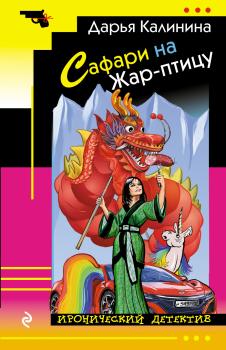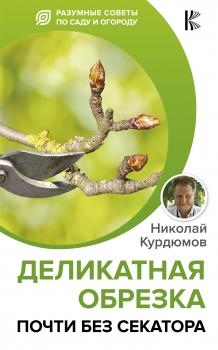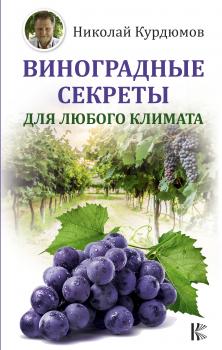MREADZ.COM - много разных книг на любой вкус
Скачивание или чтение онлайн электронных книг.Learn and Celebrate! Holidays and Festivals in Great Britain and the United States
Учебное пособие содержит оригинальные тексты, посвященные праздникам Великобритании и США, и методические разработки к ним. Каждая глава пособия рассказывает о конкретном празднике или знаменательной дате и о связанных с ними традициях. Пособие делится на две части: Книга для ученика и Книга для учителя. В Книге для ученика представлены тексты с заданиями, направленными на развитие навыков чтения, говорения, письма и расширение словарного запаса. В Книгу для учителя входят ключи к заданиям, дополнительная информация, методические рекомендации. Пособие рассчитано в основном на старшие классы общеобразовательных учреждений, но может быть выборочно использовано на более ранних этапах обучения, а также на первых курсах университетов.
Влюблённые в театр
Книга «Влюбленный в театр» посвящена любителям творчества – актерам, режиссерам и декораторам, кукольникам и клоунам, оперным певцам и артистам балета. В книгу вошли статьи о работах Марка Шагала, Бориса Анисфельда и Бориса Аронсона в Американском театре, а также монографии украинских театральных художников Абрама Балазовского и Владислава Клеха; в неё также включены обзоры постановок, созданных в России, Украине и США. Авторы – писатель-критик, профессор русской литературы Ирина Панченко, театральный критик и сценограф Ксения Гамарник. Авторы – команда состоящая из матери и дочери, влюбившихся в магию театра.
Взгляд со Стороны. Избранные Рассказы
Автору повезло – у него было две жизни. Первую он прожил в СССР, откуда уехал в 1977 году, а свою вторую жизнь он живёт в США, на берегу Тихого Океана в тёплом и красивом городе Сан Диего, что у мексиканской границы. В первой жизни автор занимался многими вещами: выучился на радиоинженера и получил степень кандидата наук, разрабатывал медицинские приборы, снимал кино как режиссёр и кинооператор, работал кинорепортёром для ТВ, играл в театре, баловался в КВН, строил цветомузыкальные установки и давал на них концерты. Во второй жизни он работал исследователем в университете, основал несколько компаний, изобрёл много полезных вещей и получил на них 60 патентов, написал две книги по-английски и множество рассказов по-русски. По его учебнику студенты в университетах изучают датчики. В Калифорнийском Университете он читал лекции по теории датчиков и истории искусства периода Ренессанса. Пишет картины и путешествует по Миру. Это второй сборник рассказов на русском языке. Первый сборник «Степени Приближения» (Hurricane Books Publishers) вышел два года назад (2017). Все рассказы в этой книге (за исключением пары первоапрельских розыгрышей) основаны на реальных событиях и примечательных людях, а потому в этой книге мало вымысла.
Качим-кермек. Возвращение
Издание приурочено к персональной выставке Марии Михайловой-Гольдман «Путь шафрана» в Государственном музее Востока. Живописные работы созданы художницей по впечатлениям от путешествий. В серии из пятнадцати произведений большинство работ посвящено шафрану. Пряность, благовоние, лекарство, краситель – шафран давно стал символом Востока, а его ценность до сих пор сопоставима с золотом. В работах Михайловой-Гольдман описывается весь путь шафрана: цветение крокусов; сбор цветов и трудоемкий процесс извлечения хрупких нитей; торговля специей на базарах, где кружится голова от красок, запахов и звуков. Живопись Марии – это восхищение творением природы и повествование о человеческой жизни, подчиненной ее вечному круговороту.
Спецназовские байки
Самая полная версия книги Алексея Суконкина «Спецназовские байки», в которой автор в коротких, но ёмких по своему содержанию рассказах, показывает Российскую армию через призму здорового армейского юмора, уместного даже в самых сложных и критически тяжелых ситуациях, где умелые бойцы и командиры способны радоваться последним осколкам жизни… а если по существу, то прочитав эту книгу, станет понятно, почему военные упорно считают, что тот, кто в армии служил, тот в цирке не смеется!
Выйти замуж за Кощея. Невеста-лягушка
«Невеста-лягушка» – фантастическая повесть Натальи Жаровой, вторая книга цикла «Выйти замуж за Кощея», жанр любовное фэнтези, юмористическое фэнтези. Хороша была царевна Забава! Нравом весела, ликом пригожа. Всем женихам отказ давала, ни на кого с лаской не глядела. Обижались добрые молодцы, брови соболиные хмурили, головы кудрявые опускали, да так и уходили – ни с чем. Но один, пуще всех разобиделся, выкрикнул в сердцах слова древние, колдовством навеянные. И обратилась Забава лягушкою: с ночи до утра квакала, с рассвета до заката – человеком ходила. Потужила-потужила, а потом лапкой зелёной махнула, да и поскакала счастье искать, ведь испокон веков ведомо, что только истинная любовь способна проклятие снять, а значит надо найти того единственного, кто самой судьбой предназначен. Книга 1. Выйти замуж за Кощея Книга 2. Невеста-лягушка Увертюра «Рассвет на Москве-реке» из оперы «Хованщина» М.П. Мусоргского /Хор и оркестр Большого театра/запись 1954 г. © Жарова Наталья © ИДДК
Сафари на Жар-птицу
Саша никак не ожидал, что в центре города ночью можно увидеть самого настоящего ниндзя, спокойно спускающегося по стене комбината, где работала Сашина мама. Мало того, рядом со зданием он углядел фургон, из которого торчал радужный хвост единорога. Это можно было бы принять за фантастический сон – если бы не одно НО. На следующее утро выяснилось, что комбинат ночью ограбили. Унесли все деньги и ценные документы…
Деликатная обрезка. Почти без секатора
Новая серия книг Николая Курдюмова, самого известного в нашей стране популяризатора органического земледелия, – долгожданный подарок для миллионов поклонников садового мастера, как он сам себя называет. Здесь вы найдете как материалы из уже полюбившихся изданий, так и новые – об открытиях и приемах, позволяющих собирать экологически чистый урожай, причем без особых усилий. В этой книге автор расскажет о том, как сформировать крону плодоносящих деревьев, причиняя им минимум вреда или не травмируя их вовсе. Рекомендации даны как для южных регионов нашей страны, так и для более северных, в том числе и Сибири.
Виноградные секреты для любого климата
Известный в нашей стране пропагандист принципов природного земледелия Николай Курдюмов расскажет о том, как создать умный виноградник, то есть совместить, насколько это возможно, простоту ухода за ним с прекрасным урожаем. Его советы – лучшее пособие для начинающих, так как даны не ученым-виноградарем, мыслящим промышленными масштабами, а дачником-практиком, прошедшим весь путь создания собственного виноградника с нуля. В книге автор расскажет об опыте таких же, как и он сам, энтузиастов-опытников из разных климатических зон России, с которыми познакомился на почве любви к этой древней культуре.
Всего одиннадцать! или Шуры-муры в пятом «Д»
Ради любви – первой в жизни! – Егор и Никита готовы на всё. Купить на скопленные деньги огромный букет цветов, осыпать единственную и неповторимую подарками, чудом достать билет на желанный для неё концерт – пожалуйста! Вот только влюбились друзья в одну и ту же девочку – Ангелину, новенькую в их пятом «Д». Да что там билеты и цветы! Вопрос так стоит: кто из них готов рискнуть жизнью ради любимой и что дороже – любовь или мужская дружба? Неважно, что им всего одиннадцать: чувства – самые настоящие! Послушайте книгу Виктории Ледерман, написанную в форме чередующихся монологов трёх главных героев. Рассуждения Ангелины, которая жаждет внимания и ловко манипулирует одноклассниками, сменяются душевными метаниями добродушного хулигана Егора, затем следуют искренние переживания «ботаника» Никиты, и так снова и снова по кругу… В результате слушатель получает возможность понять и прочувствовать каждого персонажа «изнутри», не ассоциируя себя лишь с кем-то одним. Следить за эволюцией Егора, Никиты и Ангелины, за их мыслями и чувствами – занятие увлекательное и волнующее. Традиционный для «взрослых» и редкостный для «детских» сюжетов любовный треугольник переживается его одиннадцатилетними участниками столь же остро, как и подростками в старшем возрасте. Сквозь реалии наших дней: супермаркеты, соцсети, компьютерные игры – проступают узнаваемые особенности детской классики: мальчишеское геройство, чувство локтя, становление и закалка характеров. И повесть о современных пятиклассниках оборачивается для юного слушателя мостиком к его внутреннему росту и взрослению. Исполняют Дмитрий Рыбин и Татьяна Манетина Производство студии MDM-Vision Генеральный продюсер Андрей Лобзов Режиссёр Виктория Козельцева Продюсер постпродакшн Валерия Скачкова Использованы музыкальные композиции «Frost Waltz (Alternate)» и «Dreamy Flashback» Кевина Маклеода (Kevin MacLeod) с сайта: www.incompetech.com Автор обложки – Ольга Громова © ИД КомпасГид ©&℗ ООО «1С-Паблишинг»









